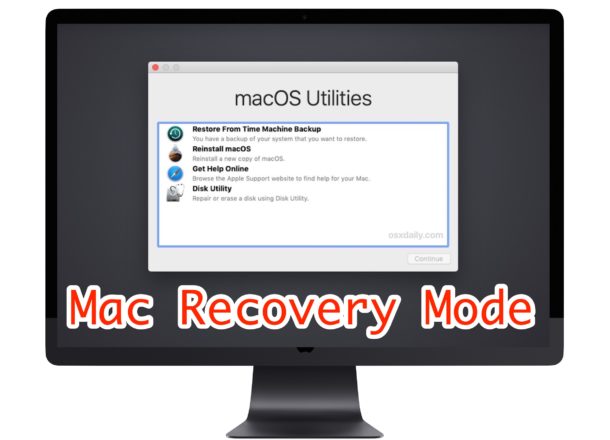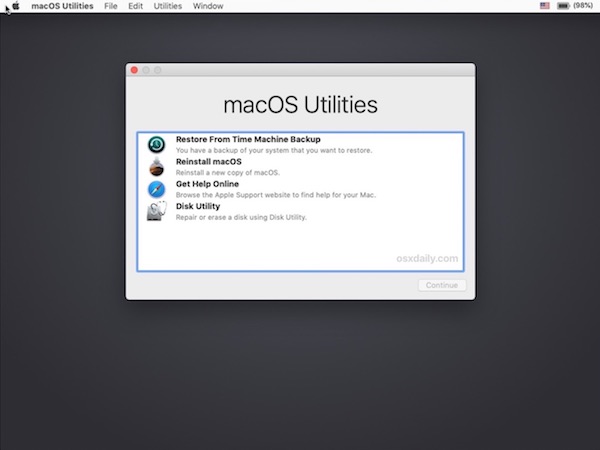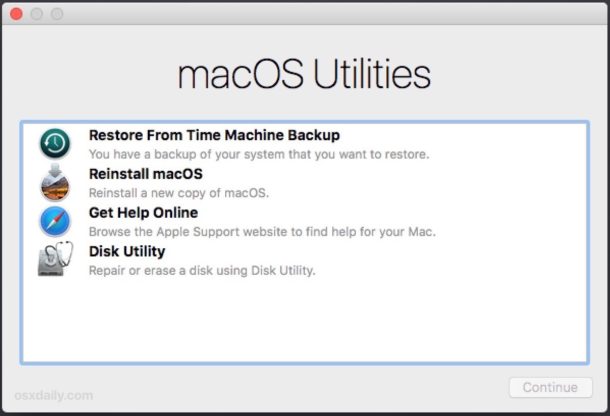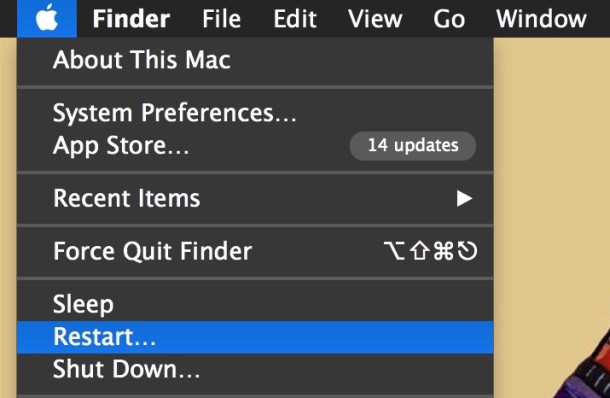How to Start Mac in Recovery Mode (Intel)

Rarely you may need to boot a Mac into Recovery Mode. Starting up Mac OS into Recovery Mode allows for various important troubleshooting and recovery features, including the ability to reinstall MacOS, repair a hard drive with Disk Utility, erase a boot disk, restore a Mac from a Time Machine backup, adjusting and setting Firmware passwords, as well as some other more advanced functionalities.
This article will explain how to start a Mac in Recovery mode, and detail the options available once a Mac is booted into Recovery.
Typically Recovery Mode on a Mac is for advanced users and specific tasks like those outlined above only, and without a particular reason to do so there isn’t any practical purpose for booting into Recovery on a Mac unless you’re just curious. If you are not sure what you’re doing, it’s best to not boot into Recovery on a Mac because you could potentially erase a Mac or perform an action you’d later regret, thus this is best for advanced Mac users with a thorough knowledge of what they’re doing and why. Always back up a Mac before performing any Recovery functions.
How to Boot in Recovery Mode on Mac
Recovery Mode is accessed during system start by using a keyboard combination, here’s how it works:
- Shut down the Mac, or reboot the computer
- As soon as the Mac starts booting up, hold down Command + R keys together
- Continue to hold Command + R keys for a few seconds until a moment after you see the Apple logo, you can then release the keys and the Mac will boot into Recovery Mode
- You will know the Mac is in Recovery Mode when the “Utilities” screen appears with various troubleshooting, recovery, and restoration features available


When a Mac is booted into Recovery, the normal desktop and app experience is not available. Instead, you are provided with a limited set of options and choices specific to recovery mode.
Mac Recovery Options, Tasks, & Troubleshooting Tricks
There are a variety of troubleshooting steps and configuration options available once you’re booted into Recovery on a Mac, some of the included options are possibilities are as follows:
- Restore a Mac from a Time Machine backup
- Set a firmware password on the Mac
- Disable System Integrity Protection, or enable SIP if it was disabled previously or never enabled in the first place for some reason
- Reinstall current MacOS system software, including Mojave, High Sierra and Sierra, OS X El Capitan, Yosemite, Mavericks, and prior
- Restore deleted system files (this is basically achieved through reinstalling MacOS system software on the Mac)
- Fix a broken EFI partition (this is achieved through reinstalling system software)
- Repair and erase hard disks with Disk Utility
- Erase and reset a Mac to factory default settings (this is a multi-step process involving erasing the disk then installing system software
- Get help online through Apple
- Access the Terminal from Recovery mode
- Access Network Utility tools from Recovery
Some of these options are available at the primary Mac OS “Utilities” screen, while others are contained within menus, or are the result of actions taken within the various options once a Mac has entered Recovery mode.

There are some other options available as well, but those are the core features that are readily available and accessible on a Mac booted into Recovery.
How to Exit Out of Recovery Mode on Mac
Leaving Recovery on a Mac is easy: simply reboot the Mac again to leave Recovery Mode. As long as you don’t hold down the key options, the Mac will boot up as usual.
You can restart the Mac while in Recovery Mode by going to the Apple menu and choosing “Restart” from the menu options.

Depending on what task(s) you did or didn’t perform in Recovery, the Mac will either boot up as usual, or with the effects of whatever changes, troubleshooting steps, adjustments, repairs, erasures, reinstalls, or any other actions taken while in Recovery. If you simply booted into Recovery once to explore it and chose no options, then restarted as usual, no changes will have been made to the Mac.
Additional Mac Recovery Tips
On some Macs and older versions of Mac OS you can also get into Recovery by holding Option key and selecting the Recovery partition instead during the boot process. The end result is the same.
Another option is to to use Internet Recovery which allows for reinstalling the system software version of Mac OS or Mac OS X that came with the Mac originally, though Internet Recovery is more limited since it requires internet access. The recovery features are basically the same in Internet Recovery, except the entire recovery experience is achieved through the internet, which obviously requires internet connectivity and decent broadband access.
Do you have any tips, tricks, thoughts, experiences, or comments about using and booting into Recovery mode on a Mac? Share with us in the comments below!


A key missing detail is that this procedure requires a hard wired keyboard. Right?